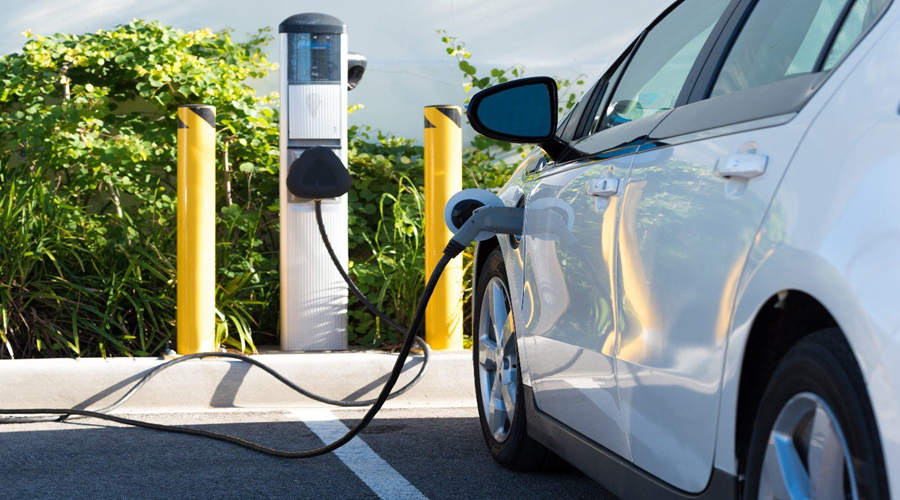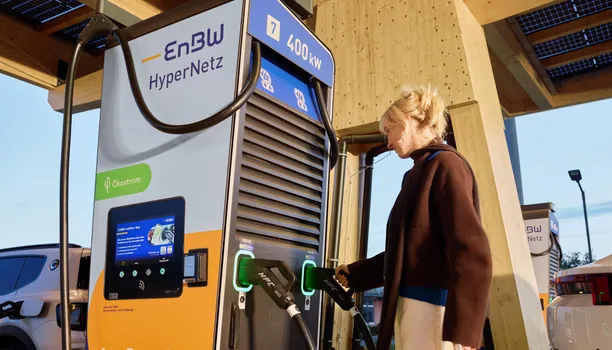The transition from the Chinese GBT connector to the European Type 2 (T2) connector is a reality in Ecuador‘s electric vehicle charging infrastructure market.
This shift, driven by dealerships and the growing demand for efficiency, will shape the future of the sector.
Why is GBT falling behind and what impact will this change have on the country?
The Asian connector was the predominant standard due to the presence of brands like BYD and KIA, which used this technology in their vehicles. However, today the trend is changing.
Dealers are adopting the T2 connector due to its higher charging capacity, reaching up to 22 kW on alternating current (AC), compared to the 9 kW to 11 kW offered by GBT.
This transition responds not only to the efficiency of T2 connectors but also to the increasing global standardisation, which favours European chargers and interoperability in an increasingly globalised market.
The Predominance of Type 2: Why is the Change Inevitable?
The Type 2 connector is also gaining ground due to its superior power capacity and compatibility with the latest electric vehicles.
Bernardo Espinel, General Manager of Rayo Carga, discusses this market trend in an interview with Mobility Portal Latinoamérica.
According to Espinel, “Dealers are realising that, in a short time, all high-end electric vehicles will migrate to T2, which leaves GBT, in a way, forgotten.”
This change is being adopted by vehicles from KIA, Audi, BMW, and Porsche, which are already integrating T2 into their new models.
This confirms that GBT, primarily used in vehicles from Chinese brands, is losing ground to the efficiency and versatility of the T2 standard.
Challenges and Progress in Ecuador
Infrastructure in Ecuador is still in its early stages, although significant progress has been made in its three main cities: Quito, Guayaquil, and Cuenca.
The country faces major challenges in covering the needs of its entire territory.
According to data from the Ecuadorian Association of Automotive Companies (AEADE), there are around 54 charging points in Quito, the Ecuadorian capital, concentrated in key areas such as El Condado, La Carolina, and Cumbayá.
Charging infrastructure here leads the country, and the Type 2 connector is the most widely used, making it easier for electric vehicle drivers to access charging.
Guayaquil, the largest city, follows Quito with around 16 points, mainly in high-traffic commercial areas such as Mall del Sol.
“Guayaquil has begun to expand its charging infrastructure, but it still depends on a model centred around commercial areas, which facilitates recharging for drivers passing through these zones,” explains Espinel.
Cuenca, though still in the early stages, is showing signs of interest in expanding its charging network. In this city, with around 10 points, Type 1 and Type 2 connectors predominate, with some chargers still in GBT format.
“Cuenca has enormous potential for growth, given its importance as a tourist destination and its expanding population, which could accelerate the development of its charging infrastructure in the coming years,” notes Espinel.
The Challenge of Standardisation and the Lack of Clear Regulation
A key obstacle to the expansion of charging infrastructure in Ecuador is the lack of clear regulation regarding standards.
Although the country has operational charging points in its main cities, there is still no specific regulation determining the technical and safety requirements for chargers.
“Ecuador has done a great job simplifying regulations, but the lack of standardisation is a challenge for the expansion of the electric vehicle market,” says Espinel.
The installation of chargers with diverse standards, such as Type 1, Type 2, and others like CHAdeMO or CCS, creates a complex environment for drivers and businesses.
Moreover, the available charging powers range from 7.2 kW to 50 kW, depending on the point. However, the country lacks a coherent strategy to integrate these different technologies harmoniously.
Private Projects: Towards a More Accessible and Efficient Solution

Amidst these challenges, the private sector is taking the lead.
Rayo Carga, with the support of private organisations, is developing an innovative solution to install chargers in urban and private areas, with an initial investment of 10 points.
“Our goal is for electric vehicle users to pay for their own energy without affecting the administrative costs of residential complexes,” explains Espinel.
The company plans to expand this network to 50 charging points in the coming months, allowing more drivers to access this infrastructure.
The shift towards the T2 connector and the expansion of charging infrastructure are only the first steps in a process that could transform electric mobility in Ecuador.
“Ecuador is at a crossroads. While major cities like Quito and Guayaquil are making progress, there is still much to be done in rural areas and other regions.”
“It is crucial that both the public and private sectors work together to create an environment that fosters the expansion of electric mobility,” concludes Espinel.
DISCOVER MOBILITY PORTAL DATA
Discover Mobility Portal Data, a new exclusive market intelligence platform offering reliable data and key reports to support smart decision-making across the automotive sector — covering both combustion and electric vehicles, as well as charging infrastructure.
Research, trend analysis, and neatly organised statistics presented with clarity and precision, alongside up-to-date insights — all just one click away.
With Mobility Portal Data, good decisions are on the horizon.
READ MORE
-
chargecloud Expands Marketplace with AI-Based Support: Cooperation with Lemonflow Technologies
The integration brings 24/7 AI-powered user support, fully embedded into the chargecloud ecosystem, aiming to enhance operational efficiency and service quality for CPOs across Europe.
-
EV transition in Europe slows, but momentum remains after EU climbdown
EU policy flexibility may ease short-term pressure on automakers, yet rising EV sales, infrastructure needs and long-term investment signal that electrification remains the industry’s core trajectory.
-
EnBW and Alpitronic strengthen long-term partnership to scale high-power charging across Germany
The agreement covers fast-charging hardware, joint development of future functionalities and a multi-year maintenance framework to support EnBW’s expanding HPC network.









